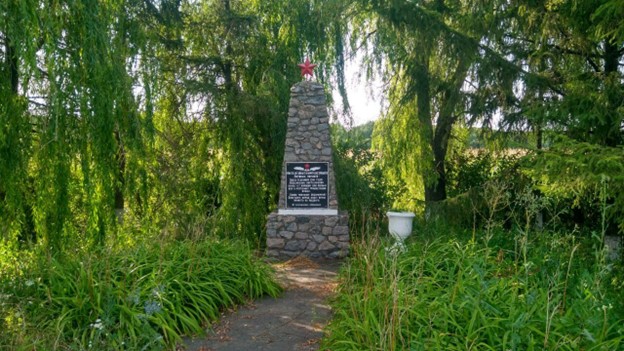- +38(0542)68-77-87
- 116, Kharkivska st., Sumy, Ukraine
- info@el.sumdu.edu.ua
The place of the first battle of the Lebedyn partisan detachment Karpov K.G. with the Nazis
Full name of the monument :
The place of the first battle of the Lebedyn partisan detachment Karpov K.G. with the Nazis
Region :
Sumy region
Address of the monument :
2.0 km from the village, on the left of the road Lebedyn - Maly Vystorop. The village of Steblyanki, Sumy district
Status :
Historical monument of local significance
Monument installation year (s) (if available) :
1970
Time classification according to the installation epoch :
Soviet period (1922-1991)
Person/event, object the monument is dedicated to :
real person(s)
Gender :
mixed group
Social status :
persons of war
Components of the monument :
Obelisk - 3.45 m
Material :
mixed materials
Type of art composition :
architectural object(s)
Artistic approach :
abstract art
Main text, additional text (if available) :
Yes
memorial inscription
Language(s) of the text :
Ukrainian
Narrative commemorates :
Honoring the culture of war victims, including memorialization
The preservation state of the monument at the time of the research :
exists
Institution responsible for maintenance :
Lebedyn city council
Institution’s website :
Free text that contains data valid for interpretation :
On December 9, 1941, the first battle of the Lebedyn partisan unit under the command of K. Karpov against the German-Nazi occupiers took place here. The detachment was created at the beginning of October 1941. The commander of the detachment was K. Karpov (chairman of the city executive committee), commissar O. Kamai and deputy commander P. Romanov. Detachment of virgins in the northern forests of the district. The headquarters and base were located at Klyushniki Initially, there were 37 soldiers in the detachment, and then the detachment was replenished with Red Army soldiers who left the encirclement. This battle was the beginning of the struggle of the partisans against the German-Nazi invaders. In 1970, an obelisk made of broken stone was installed at the site of the battle, on the front side which is a cast-iron board with a memorial inscription.

